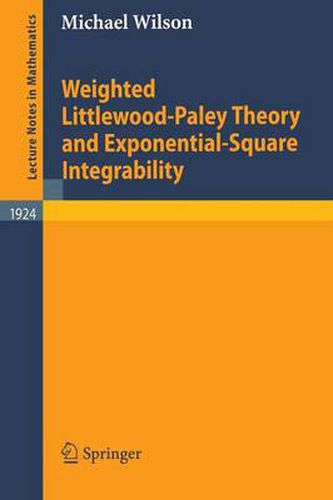Readings Newsletter
Become a Readings Member to make your shopping experience even easier.
Sign in or sign up for free!
You’re not far away from qualifying for FREE standard shipping within Australia
You’ve qualified for FREE standard shipping within Australia
The cart is loading…






This title is printed to order. This book may have been self-published. If so, we cannot guarantee the quality of the content. In the main most books will have gone through the editing process however some may not. We therefore suggest that you be aware of this before ordering this book. If in doubt check either the author or publisher’s details as we are unable to accept any returns unless they are faulty. Please contact us if you have any questions.
Littlewood-Paley theory extends some of the benefits of orthogonality to situations where it doesn’t make sense by letting certain oscillatory infinite series of functions be controlled in terms of infinite series of non-negative functions. Beginning in the 1980s, it was discovered that this control could be made much sharper. This book offers a gentle, well-motivated introduction to those discoveries, the methods behind them, their consequences, and some of their applications.
$9.00 standard shipping within Australia
FREE standard shipping within Australia for orders over $100.00
Express & International shipping calculated at checkout
This title is printed to order. This book may have been self-published. If so, we cannot guarantee the quality of the content. In the main most books will have gone through the editing process however some may not. We therefore suggest that you be aware of this before ordering this book. If in doubt check either the author or publisher’s details as we are unable to accept any returns unless they are faulty. Please contact us if you have any questions.
Littlewood-Paley theory extends some of the benefits of orthogonality to situations where it doesn’t make sense by letting certain oscillatory infinite series of functions be controlled in terms of infinite series of non-negative functions. Beginning in the 1980s, it was discovered that this control could be made much sharper. This book offers a gentle, well-motivated introduction to those discoveries, the methods behind them, their consequences, and some of their applications.